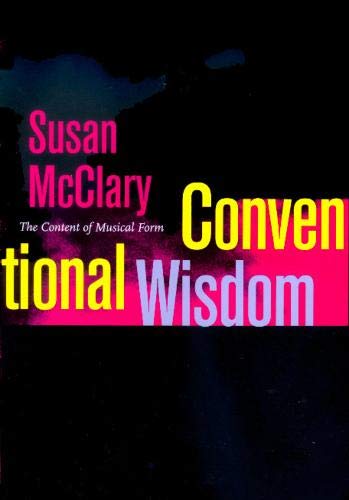



Full description not available
P**R
High recommendation
During an analysis of a Stradella aria, McClary discusses how the music which starts in a sunny mood (in a major key) moves to a relative minor, and it's as if a cloud has passed overhead. She shows how this modest but effective narrative, dramatic device eventually became a convention (modulation to the relative major or minor) that was so widely used, the dramatic roots became obscured and this modulation began to be taught as a purely "formal" device.Time and again, McClary shows that "form" is not something that is necessarily dry and intellectual, but rather something that serves a very particular purpose, rooted in the needs and desires of society, though often invisible to that society. By bringing to light the conventions that are integral to the work, her analyses offer as many insights into the audiences of their day as they do into the compositional mechanics of the works themselves.Speaking as a classical composer and a performer, I found it inspiring the extent that this book brings music to life. That her analytical methods work as well with Bessie Smith and Prince as they do with Vivaldi and late Beethoven string quartets is a strong plus. Let's live in the whole world of music!I think we have here what will be a highly influential book, or at the least, part of a highly influential and fruitful new trend in musicology. I'm recommending it to all my composer and performer associates, particularly those of a more analytical bent.It's not always the easiest read. I'd rate it at a "college" (but not necessarily "graduate college") level as opposed to being directed to a more popular audience. Lot's of interesting footnotes and citations. But much will be accessible to music lovers with only a little formal musical training. I think having some ability to read music would help (especially if one does not have access to recordings of the works she analyzes).
J**L
Music's favorite renegade does it again
If you ever met Susan McCalry, you'd find it hard to believe that this petite, soft-spoken, witty woman could inspire such ardent hatred from scores of musicologists. Moreover, the sociological and feminist concepts that she brings to bear on Western art music are already old hat in literary and art criticism. But musicology is, to a large extent, still in denial about Modernism, so Post-Modernism is way beyond the pale. So McClary's first book, "Feminine Endings," rocked the world of musicology to its hardbound, white-male foundation, and provoked round after round of McClary-bashing. Her new book, based on a series of lectures given at UC Berkeley, therefore occasionally sounds a bit defensive. (At one point she notes that she *can* say something nice about Beethoven, as if pointing out the sexual agenda in the 9th Symphony needed an apology.) For any reasonably intelligent reader who has wondered how Western music works, this new book is superb at explaining those mechanisms. McClary uses her usual catholic tastes to discuss everything from Vivaldi to the Blues, and you will come away understand how both of them function, and why we feel moved when listening to either one. Armed with her usual wit and unusual perceptivity, McClary lays bare the workings of Western music with clarity and grace. In the process, she nearly redeems musicology as a discipline worth taking seriously. You go, girl.
M**S
I would recommend
This book is better than Feminine Endings. Its conclusions and assumptions are less questionable, but it also explains her approach in Feminine Endings. Only a very basic knowledge of music theory is necessary, I imagine you could have a friend in their first year of music theory explain it to you while you listened to the music she discusses. Yet she explains more than most first year theory classes would.
Trustpilot
4 days ago
1 month ago